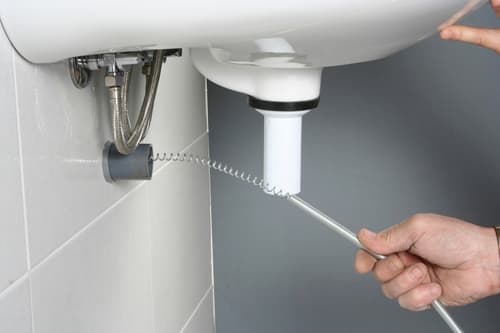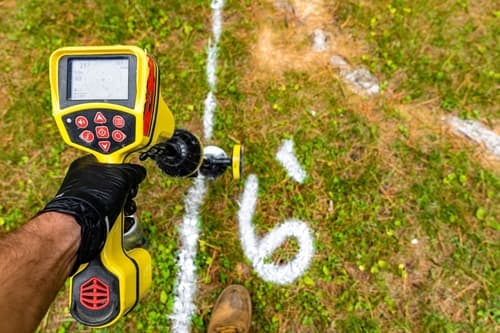August 1, 2025
Sewer Line Inspections vs. Traditional Diagnosis Methods
When a stubborn clog or foul odor appears on your property, a fast and accurate solution becomes essential. In Chula Vista, sewer line camera inspection is a widely used modern method, but it’s not the only option available.
This raises an important comparison between traditional techniques—based on guesswork and excavation—and today’s video-based approaches that provide a clear internal view. Repair costs often hinge on the method chosen, so it’s worth understanding both. Read on to compare sewer line camera inspections and traditional diagnostic methods to make the most informed decision for your home.
Is a sewer line inspection worth it?

Plumbing issues demand clear answers, yet not every diagnostic method delivers the same level of certainty. One approach uses high-resolution optics to provide a live view inside the drain; the other relies on pressure testing, dye, manual tools, or, when necessary, excavation. While there are certainly signs you might need a sewer line camera inspection, it’s just as important to understand how each option compares in terms of cost, accuracy, and disruption. Let’s take a closer look at both methods and what sets them apart.
Common traditional methods
Before live video reached job sites, plumbers relied on a handful of time-tested procedures. These tools and techniques still appear in service vans, but they solve only part of the mystery hidden below the surface.
- Plunger and auger tests: These usually give the first clue. They clear minor obstructions near a fixture, yet they reveal nothing about the pipe condition farther along.
- Dye tracing: This method comes next, when leaks escape to the soil or pavement. Colored liquid moves through the drain and shows where water surfaces, but it says nothing about cracks or buildup tucked inside the run.
- A mechanical snake: This tool drills through wipes, soap, and roots, but it doesn’t include optics. The operator feels resistance and breakthrough moments, but with only a drain snake, no one sees whether fractures lurk behind the debris.
- Section-by-section excavation: This method removes all doubt by exposing each suspect segment. Crews dig until they reach the pipe, check for damage, and either patch or replace it. The process solves the problem, but it tears up landscaping and drives labor costs sky-high.
Benefits of traditional diagnosis
- The upfront price stays low when the blockage sits close to a sink or toilet
- Basic tools fit inside almost any diameter, even narrow branches
- Works when heavy collapse blocks modern probes
Drawbacks of traditional diagnosis
- Trial and error extends labor time and homeowner stress
- Hidden defects may remain, so repeat clogs often return
- Yards, driveways, or floors may need demolition for confirmation
- No lasting visual record for warranties, insurance, or real estate deals
Sewer line camera inspection
Digital imaging has changed how professionals identify problems below ground. Here’s how a sewer line camera inspection works: a flexible probe with LED lighting is inserted into the drainage system, streaming sharp, real-time footage to a tablet. As it moves through the pipe, a distance counter on screen pinpoints the exact location of any issues, and an above-ground locator confirms horizontal positioning.
This type of sewer camera can see issues like cracks, invading roots, corrosion, or sunken areas with precision. Instead of tearing up large sections of property, technicians make targeted repairs, and homeowners receive a digital video record of the system’s condition.
Advantages of a modern video survey
- Live visuals expose corrosion, offsets, bellies, and invasive roots
- Depth and location data guide keyhole repairs instead of full trenches
- Recorded files support warranty claims and boost real estate confidence
- Early detection of small flaws prevents costly emergencies down the road
Potential limitations to note
- The entry point must fit the probe head diameter
- Heavy sludge may need jetting before clear images appear
What’s better?

It’s not always a simple either-or choice. While modern video equipment offers clearer insight and faster results, it does have limitations, and traditional methods still have their place. A skilled plumber won’t rely on high-end tools unless the situation truly calls for it. Some problems can only be addressed through hands-on techniques, especially when buildup or damage blocks visibility.
That said, when access allows, video-based diagnostics consistently offer better accuracy, less disruption, and more targeted repairs. The key is using the right tool for the job and knowing when advanced visuals can save time, stress, and unnecessary digging.
Which professionals in Chula Vista offer sewer line camera inspections?
At Bob the Plumber, we don’t believe in guesswork. Our team is known throughout Chula Vista for combining advanced diagnostic tools with real-world plumbing expertise to deliver results that are fast, accurate, and cost-effective. We never push unnecessary technology or outdated methods – only what your home truly needs. From the Sleep Train Amphitheatre area to the farthest neighborhoods, we’ve helped countless property owners address plumbing issues quickly and efficiently, and we can do the same for you. Reach out now to learn more about our services and schedule an inspection!
Related Articles
4 Signs It’s Time to Replace Your Tankless Water Heater
When you decide to make life easier and upgrade your home with a modern water heating system, it’s important to …
Top 5 Advantages of Having a Tankless Water Heater
Are you tired of taking a shower only to have the hot water run out halfway through? Does the thought …
Why Your Hot Water Smells Like Rotten Eggs & How to Fix It
You hop in the shower, ready to relax, and suddenly—there it is. That unmistakable rotten egg smell. It’s one of …
